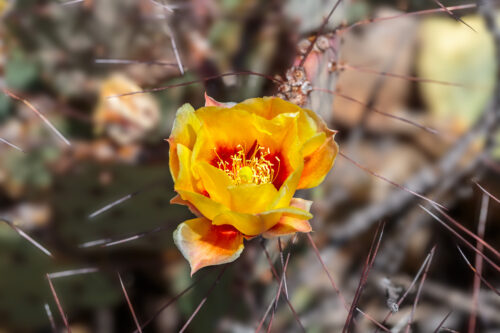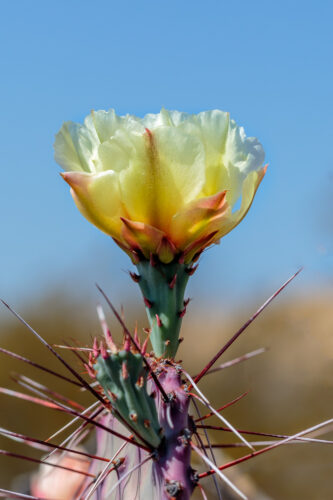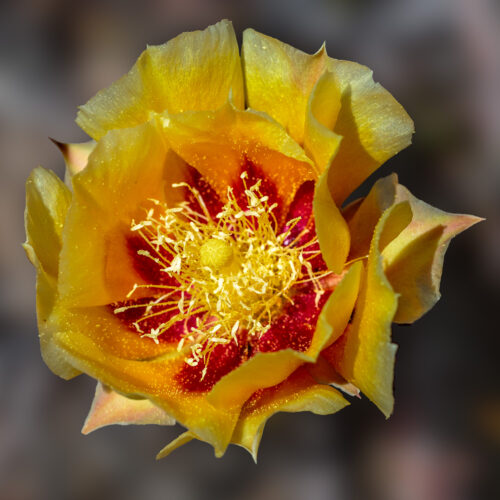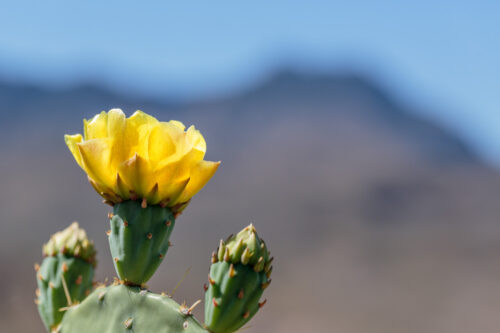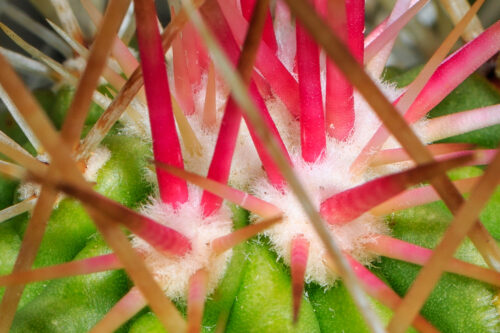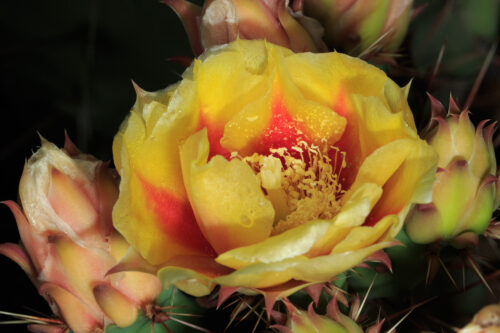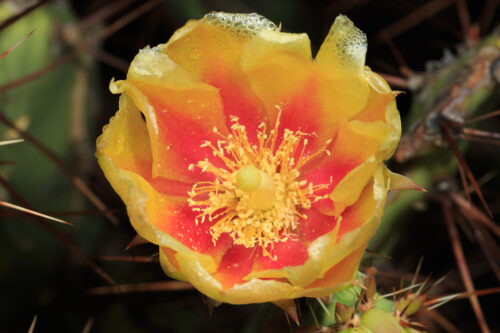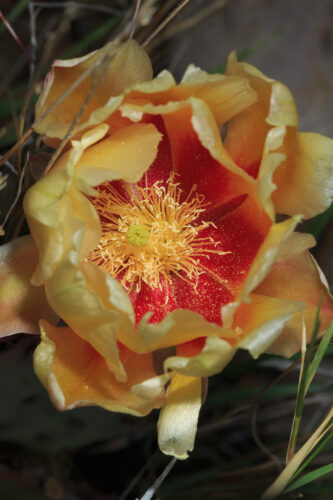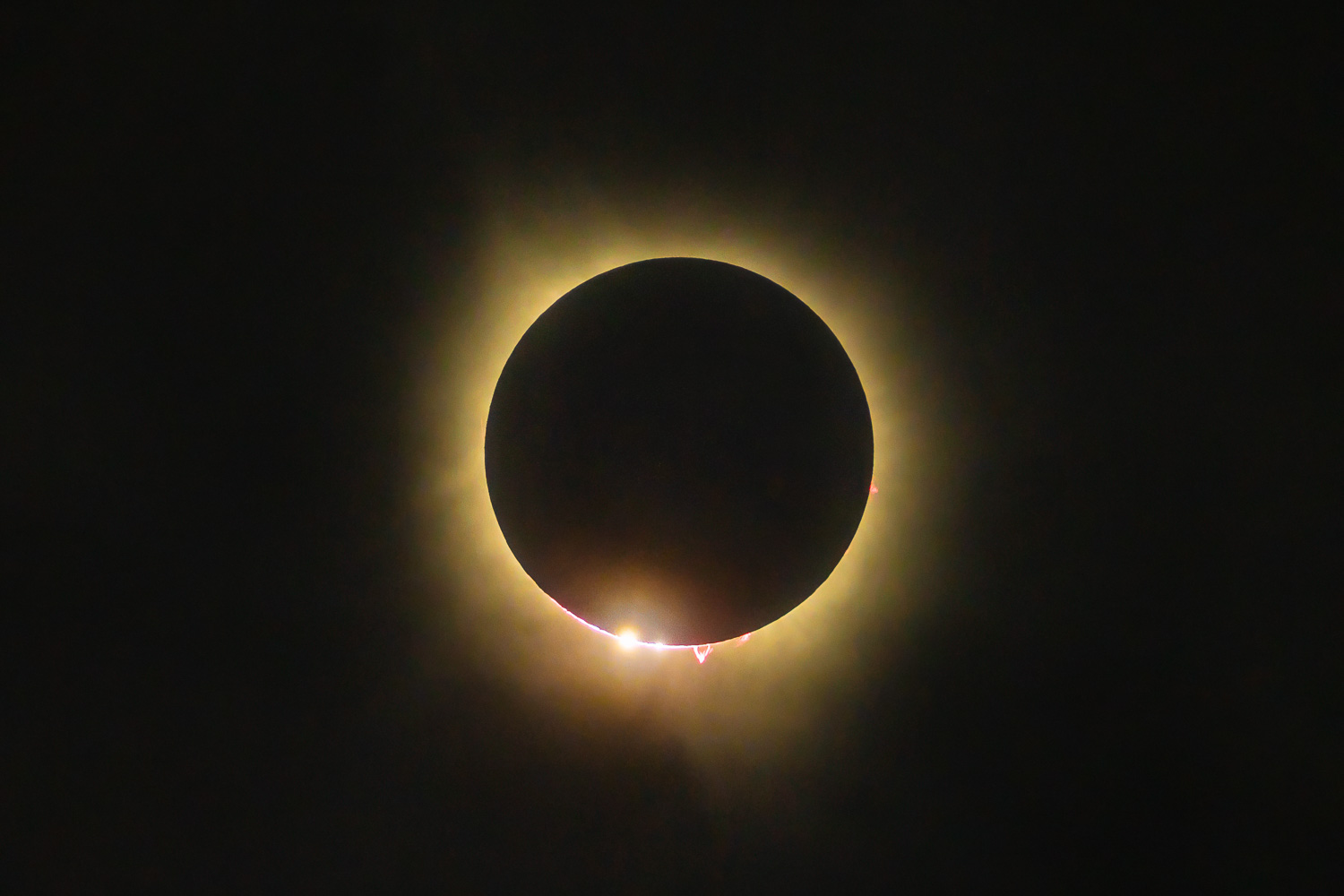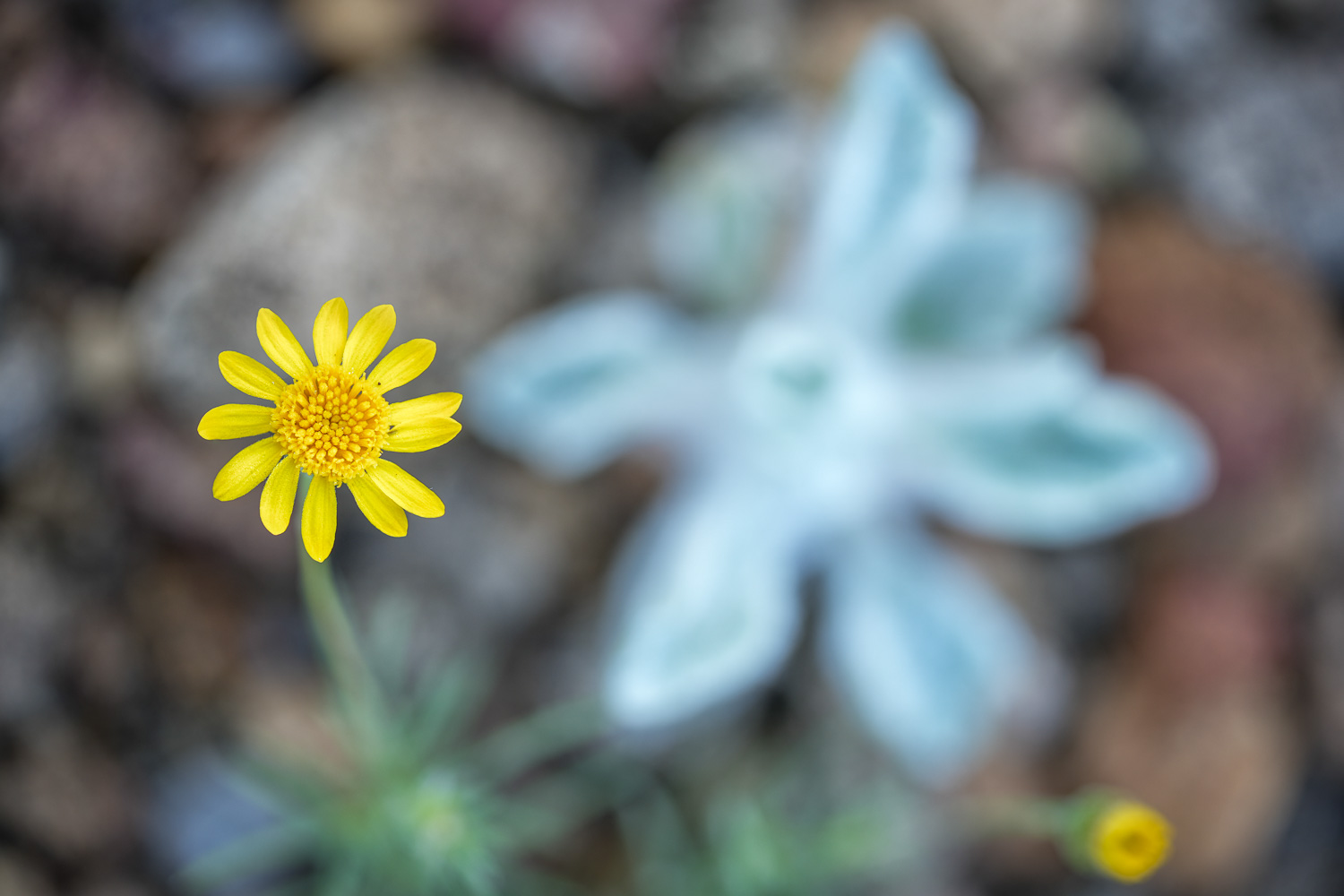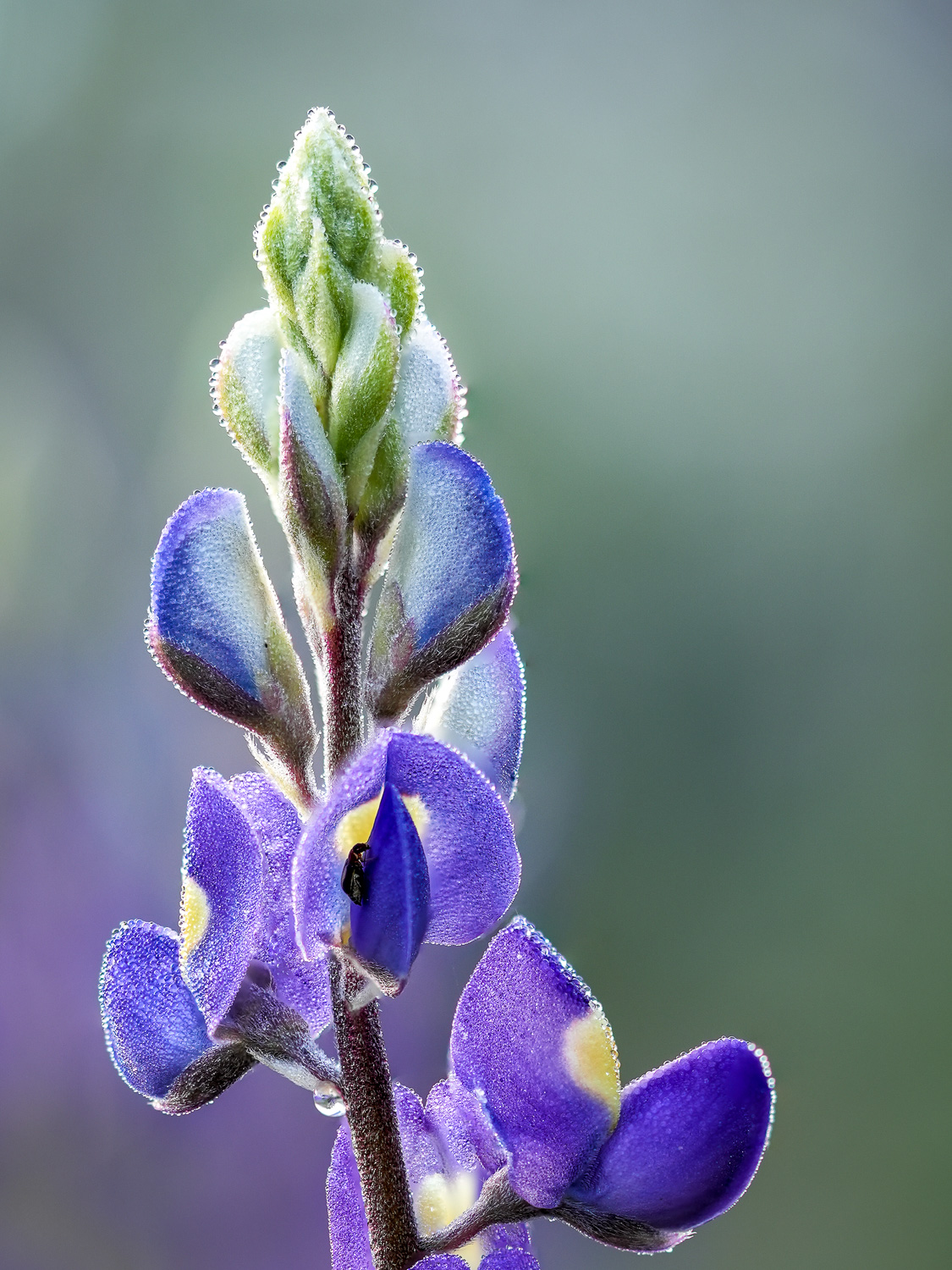Engelmann’s Prickly Pear Cactus (Opuntia engelmannii var. engelmannii)
Description: This is perhaps the most abundant prickly pear in West Texas, and one of the most attractive. The masses of yellow to orange flowers it produces will bring one to a stop, no matter how often they are encountered. The plant itself is sometimes 8 feet across and almost as tall. The fruits, called tuna, are up to 2 1/2 inches long with a deep maroon color that makes the plant attractive after the flowers are gone. The species and variety of this plant are named for George Engelmann (1809-1884) who was born in Germany and settled in St. Louis, Missouri, as a young man. He was a physician and botanist, describing especially North American Abies (Firs), Agaves, Cactus (for which he described more than 108 species), Cuscuta (Dodder), Euphorbiaceae (Spurge Family), Juncus (Rushes), Juniperus (“Cedar”), Pinus (Pines), Vitis (Grapes), and Yuccas. When he died much of his collection went to Missouri Botanical Garden.
Family: Cactaceae
Synonym(s): Opuntia dillei, Opuntia discata, Opuntia lindheimeri var. tricolor, Opuntia megacarpa, Opuntia microcarpa, Opuntia occidentalis var. megacarpa, Opuntia phaeacantha var. discata, Opuntia tardospina, Opuntia tricolor, Opuntia ×subarmata
USDA Symbol: OPENE
Duration: Perennial
Habit: Cactus/Succulent
Size Class: 6-12 ft.
Bloom Color: Yellow, Orange
Bloom Time: Apr, May, Jun, Jul
Water Use: Low
Light Requirements: Sun
Soil Moisture: Dry
Bloom Notes: Soil Description: Sandy, Sandy Loam, Medium Loam, Clay Loam Clay.
ATTRIBUTION: All of the Texas Wildflower images in this post are copyrighted and are the exclusive property of Terry B. Kahler. Reproduction without explicit written consent is prohibited. Some of the information contained in this section was taken from the Lady Bird Johnson Wildflower Center website and is being used under their terms of use. Redistribution from this site is prohibited. Additional information contained in this section was taken from the USDA website including the USDA code.
